Few garments carry the weight of culture, craftsmanship, and continuity as gracefully as the Indian shawl. An exquisite blend of warmth and artistry, Indian shawls are not merely accessories—they are heirlooms, statements of identity, and timeless works of wearable art. From the opulent courts of Mughal emperors to the global catwalks of Paris and New York, Indian shawls have traversed centuries and continents. Their story is one of artistry, trade, diplomacy, and enduring allure.
Origins Rooted in Antiquity
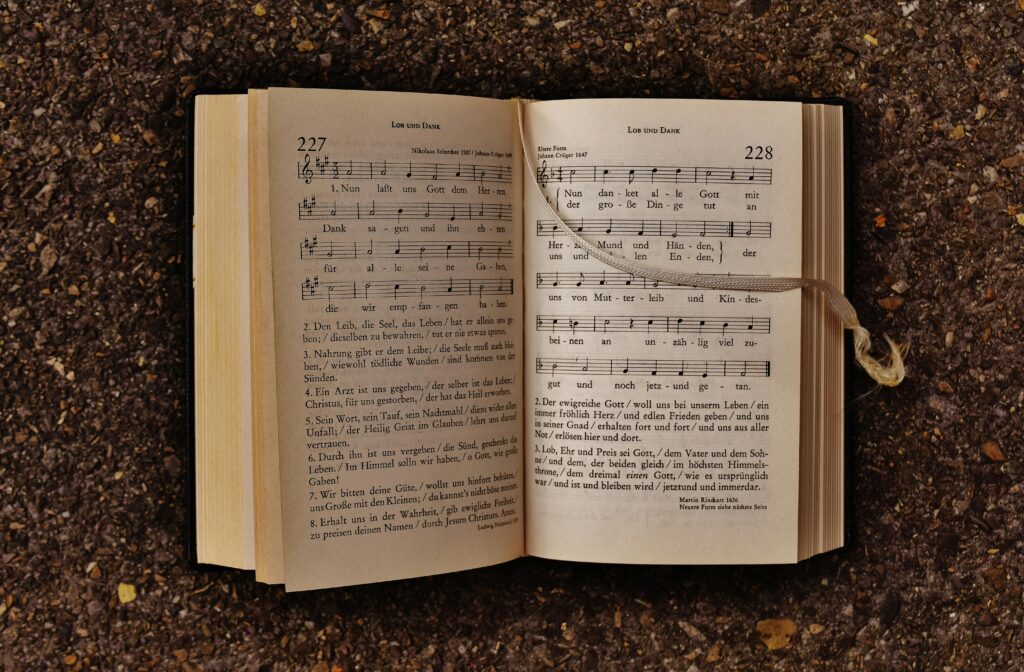
🕰️ Origins Rooted in Antiquity: A Journey Through Time
From the earliest whispers of human civilization to the grandeur of classical empires, the roots of many modern ideas, systems, and traditions can be traced back to the ancient world. The phrase “Origins Rooted in Antiquity” invites us to explore the deep historical foundations upon which contemporary culture, philosophy, governance, and technology were built.
🌍 The Cradle of Civilization
The term “antiquity” often refers to the period before the Middle Ages — encompassing the ancient civilizations of Mesopotamia, Egypt, the Indus Valley, China, Greece, and Rome. These societies were the first to organize complex cities, develop written language, codify laws, and explore religious and spiritual life.
- Mesopotamia, often called the “Cradle of Civilization,” introduced the world to cuneiform writing, astronomy, and the earliest legal codes like the Code of Hammurabi.
- Ancient Egypt gave us monumental architecture like the pyramids, mummification techniques, and hieroglyphics that still mystify modern scholars.
- The Indus Valley Civilization, lesser known but equally significant, demonstrated urban planning, sewage systems, and trade networks as early as 2500 BCE.
🧠 Foundations of Thought and Philosophy
Many philosophical traditions today owe their genesis to ancient thinkers. Antiquity was a time when questions about existence, ethics, and the cosmos began to take structured form.
- Greek philosophers like Socrates, Plato, and Aristotle laid the groundwork for Western philosophy and science.
- Indian sages contributed timeless concepts through the Vedas and Upanishads — including karma, dharma, and meditation.
- Chinese philosophers such as Confucius and Laozi shaped societal structures with teachings on harmony, morality, and balance.
🏛️ Political and Legal Systems
The ancient world didn’t just contemplate life — it created systems to govern it.
- Athenian democracy, though limited to certain classes, introduced a system where citizens could participate in decision-making.
- Roman law influenced the development of many modern legal systems, including the principles of contracts, property rights, and justice.
- Mauryan and Han Empires perfected centralized governance and bureaucracy that influenced statecraft across Asia.
🎨 Art, Language & Culture
Art, music, mythology, and language from antiquity continue to echo in our modern creative expressions.
- Greek and Roman mythology remain staples in literature and pop culture.
- Ancient languages like Latin and Sanskrit are the roots of many modern languages and technical terms.
- Architectural styles, such as Doric columns and arches, still influence buildings worldwide today.
🧬 Lasting Legacies
What’s striking about these ancient roots is not just their age but their endurance. Whether it’s the democratic ideals debated in ancient Athens or the spiritual practices from the Indian subcontinent, the influence of antiquity is all around us — silently guiding how we live, think, and relate to the world.
Mughal Patronage and the Age of Refinement
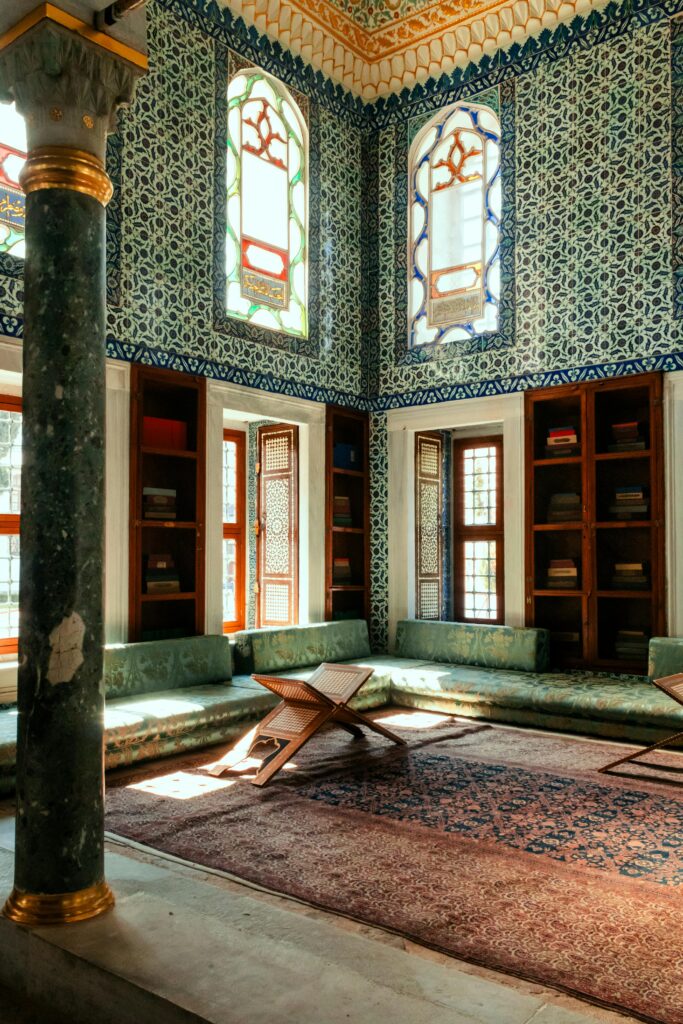
The Mughal Empire, which ruled large parts of the Indian subcontinent from the early 16th to the mid-19th century, was not only a political powerhouse but also a cultural beacon. The phrase “Mughal Patronage and the Age of Refinement” captures a golden era marked by extraordinary investment in the arts, architecture, literature, and sciences. This period laid the foundation for some of the most iconic symbols of India’s rich heritage, many of which continue to inspire the world today.
🌟 The Essence of Mughal Patronage
Mughal emperors were more than just military strategists and administrators — they were deeply invested in the arts and intellect. Their vision of empire included the creation of a legacy of beauty, order, and opulence. Patronage during the Mughal era wasn’t accidental; it was intentional, calculated, and symbolic of imperial ideology. Each emperor contributed uniquely to the cultural mosaic.
- Babur, the founder, brought Persian sensibilities to India.
- Humayun nurtured Persian artists during his exile in Persia.
- Akbar institutionalized patronage with an inclusive and experimental approach.
- Jahangir brought a refined aesthetic sensibility, especially in painting.
- Shah Jahan, the architect-emperor, epitomized Mughal elegance in architecture.
- Aurangzeb, though more conservative, still supported select forms of art, particularly calligraphy and music.
🏛️ Architecture: Grandeur in Stone and Marble
The Mughals transformed the architectural landscape of India. Their buildings were not only symbols of power but also canvases of refinement and technical mastery.
- Red Fort (Delhi) and Agra Fort showcased military might fused with aesthetic elegance.
- Fatehpur Sikri, Akbar’s royal city, became a blend of Persian and Indian architectural styles.
- The Taj Mahal, built by Shah Jahan, remains the most enduring emblem of Mughal refinement — a synthesis of Islamic, Persian, and Indian elements carved in white marble and adorned with pietra dura inlay.
Mughal architecture emphasized symmetry, domes, minarets, gardens (charbagh), calligraphic inscriptions, and intricate carvings — a style that would influence generations of builders and artisans.
🎨 Miniature Painting: Visual Poetry
Mughal miniature painting was one of the finest results of imperial patronage. It evolved from Persian styles and took on uniquely Indian characteristics under Akbar, who established a royal atelier.
- Akbar commissioned illustrated manuscripts like the Akbarnama, Hamzanama, and Razmnama (a Persian translation of the Mahabharata).
- Jahangir, an aesthete and naturalist, encouraged portraits, court scenes, flora, and fauna studies with a refined realism.
- Shah Jahan’s reign emphasized elegance and delicate brushwork, often incorporating gold leaf and vivid colors.
Mughal miniatures were not just decorative — they were deeply narrative, capturing imperial life, battles, love stories, and mythologies.
📚 Literature, Language, and Translation
The Mughals were also great patrons of literature and scholarship. Persian became the court language, and literary works in Persian flourished during this period. But Mughal rulers also fostered multilingualism.
- Translation projects under Akbar brought epics like the Mahabharata and Ramayana into Persian.
- Historical chronicles such as the Baburnama, Akbarnama, and Tuzuk-i-Jahangiri are invaluable literary and historical records.
- Poetry and Sufi literature found immense patronage, contributing to the spiritual and philosophical depth of Mughal court life.
🎶 Music and Performing Arts
Mughal patronage significantly shaped Hindustani classical music. Akbar’s court musician Tansen is legendary for elevating dhrupad and creating new ragas. The fusion of Persian and Indian musical traditions led to new styles and innovations.
- Court performances included dance forms like Kathak, which evolved during the Mughal era as a refined storytelling art.
- Instruments such as the sitar and tabla also matured under Mughal influence.
Though Aurangzeb is often portrayed as austere, he too maintained court musicians and supported certain art forms, especially religious music and calligraphy.
🧵 Textiles, Craftsmanship, and Luxury Goods
The age of Mughal refinement extended to everyday luxury and artisanal brilliance:
- Textile production — including muslin, brocade, and silk — reached international fame.
- Jewelry design, carpet weaving, and enamel work (meenakari) were developed with astonishing intricacy.
- Weapons and armor were forged as both tools of war and masterpieces of decorative art.
These goods were often gifted to visiting dignitaries and helped define the Mughal Empire’s image abroad as one of immense wealth and sophistication.
🕌 Urban Planning and Gardens
Mughal patronage extended to urban design and landscaping. The concept of charbagh (a quadrilateral Persian garden layout symbolizing paradise) became central to city planning.
- Gardens like Shalimar Bagh (Kashmir) and Nishat Bagh (Srinagar) were designed as spaces of both recreation and reflection.
- These gardens embodied spiritual symbolism — balance, order, and divine beauty.
📜 Legacy and Influence
The Age of Refinement under Mughal patronage left an indelible impact:
- It influenced Rajput, Maratha, Sikh, and Deccan courts, who emulated Mughal tastes.
- British colonial architecture later adapted Mughal styles into Indo-Saracenic designs.
- The Mughal aesthetic still permeates Indian fashion, wedding traditions, music, and art today.
Colonial Trade and Global Fascination
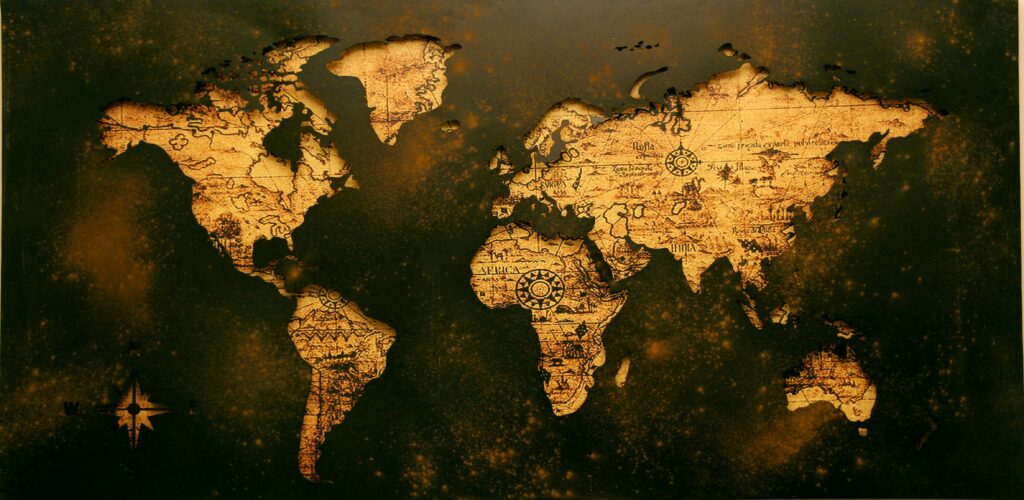
The period of colonial expansion between the 15th and 19th centuries was one of profound transformation. At the heart of this global upheaval lay colonial trade, a vast network of commerce, conquest, and cultural exchange that redefined economies and societies across continents. The term “Colonial Trade and Global Fascination” captures not only the mechanics of these global markets but also the awe, curiosity, and exploitation that came with the encounter between different worlds.
🌍 The Birth of Colonial Trade Networks
Colonial trade began as a quest for wealth and resources. European powers — notably Spain, Portugal, the Netherlands, Britain, and France — sought direct access to lucrative markets in Asia, Africa, and the Americas. The initial drivers were:
- Spices (pepper, cloves, nutmeg)
- Gold and silver
- Silk, tea, and porcelain
- Sugar, tobacco, and cotton
- Slaves and human labor
These goods were not just commodities — they were symbols of status, power, and wonder, sparking what can be termed a global fascination. Europe was enthralled by the exoticism of the East and the raw wealth of the New World.
🚢 Mechanisms of Trade: Mercantilism and Monopoly
Colonial trade was structured by the economic doctrine of mercantilism, which viewed colonies as sources of raw materials and captive markets for finished goods.
- Monopolistic companies like the British East India Company, Dutch VOC (Vereenigde Oostindische Compagnie), and French Compagnie des Indes were granted powers to trade, wage war, and administer territory.
- Triangular Trade connected Europe, Africa, and the Americas: manufactured goods from Europe were traded for African slaves, who were transported to the Americas, and the raw materials they produced were shipped back to Europe.
This model generated unprecedented profits for colonial powers but also entrenched economic dependency and social hierarchies in the colonized regions.
📦 Commodities That Shaped the World
Several goods defined the era of colonial trade and altered global history:
- Tea and Porcelain (China): Became daily rituals in European households; the British tea obsession ultimately led to events like the Boston Tea Party and the Opium Wars.
- Sugar (Caribbean and Brazil): Drove the plantation economy and created a hunger for slave labor, giving rise to the brutal transatlantic slave trade.
- Cotton and Textiles (India): Inspired British industrialization and eventually led to the deindustrialization of Indian handloom sectors.
- Gold and Silver (Latin America): Fueled European economies but devastated indigenous societies.
These goods were more than trade — they were fetishized, romanticized, and turned into cultural icons, feeding a growing European fascination with the exotic “other.”
🗺️ Exploration, Curiosity, and Cultural Exchange
The movement of goods was paralleled by the movement of people, ideas, languages, plants, and diseases — creating what historians call the Columbian Exchange.
- Botanical gardens and museums in Europe were filled with specimens from the colonies.
- Maps, books, and travelogues spread images of strange animals, peoples, and landscapes.
- Missionaries and scholars helped translate texts and traditions, while often imposing Western values.
Colonial exhibitions and world fairs showcased colonial products and people in European cities, creating both admiration and racial hierarchies.
⚖️ The Dark Side: Exploitation and Resistance
While the era was marked by global fascination, it was also one of intense violence, inequality, and resistance.
- Forced labor and slavery sustained the economies of the colonies.
- Indigenous cultures were often destroyed or subordinated to Western ideals.
- Colonial resistance — from revolts in the Americas to uprisings in India and Africa — challenged the morality and sustainability of the system.
Economic dependency created during colonial trade still lingers today in global trade imbalances and developmental disparities.
🌐 Globalization Begins
Despite its dark legacies, colonial trade marked the beginning of a truly interconnected world:
- Cuisines fused across continents — think of tomatoes in Italy, chilies in India, potatoes in Ireland, and sugar in everything.
- Languages and religions spread across empires — English, French, Spanish, and Christianity became global.
- Financial institutions, such as joint-stock companies, banking systems, and insurance markets, matured alongside colonial expansion.
This period laid the foundation for modern globalization, making the world smaller even as empires stretched farther.
Regional Diversity and Artistry

Across continents and centuries, the world’s richest legacies of creativity have always stemmed from one powerful source: regional diversity. The intricate patterns of local life—shaped by geography, climate, religion, language, and community traditions—give rise to distinctive forms of artistry. From textiles to music, architecture to folk tales, it is this diversity of regions that gives humanity its vibrant cultural mosaic.
“Regional Diversity and Artistry” isn’t just a celebration of difference. It is a lens through which we can understand identity, history, resistance, resilience, and beauty—expressed not in monolithic terms, but through the nuanced strokes of local genius.
🌍 Understanding Regional Diversity
At its core, regional diversity refers to the variations in cultural practices, languages, traditions, and environments found in different areas—even within a single country. These variations are shaped by:
- Geographical location (coastal, mountainous, desert, forested)
- Climate and natural resources
- Historical influences (colonialism, migration, invasions)
- Religious and spiritual systems
- Ethnic and linguistic communities
This diversity directly influences how people live, work, dress, and create. As a result, regional artistry becomes a unique signature of a people’s relationship with their land and heritage.
🎨 Artistry as Regional Identity
Across the world, artistic expression is deeply rooted in regional ethos. It reflects local values, beliefs, and the rhythm of everyday life.
🧵 Textiles and Weaving Traditions
- In India, each region has a distinctive textile tradition—Banarasi silk from Uttar Pradesh, Pochampally ikat from Telangana, Kanjeevaram from Tamil Nadu, and Phulkari from Punjab.
- West African kente cloth, woven by the Ashanti people of Ghana, holds symbolic meaning in its patterns and colors.
- Japanese kimono fabrics, often region-specific, use dyeing techniques like shibori and yuzen, rooted in local craftsmanship.
Each piece is not merely fabric—it’s a narrative of place, time, and community.
🏛️ Architecture and Built Spaces
- In Morocco, intricate tilework (zellige) and geometric motifs reflect Islamic artistic traditions.
- Rajasthani havelis in India display elaborate frescoes and courtyards suited to desert living.
- Andean architecture in Peru reflects indigenous stone masonry adapted to seismic conditions.
- In Scandinavia, minimalist wooden structures are designed to combat cold, dark winters, emphasizing natural light and warmth.
Regional architecture tells the story of how humans adapt to the land and embed meaning in their dwellings.
🎶 Music and Performance
- Flamenco in Spain, rooted in Andalusian, Roma, and Moorish influences, reflects the spirit of southern Spain.
- Indian classical music differs vastly between the Carnatic (South) and Hindustani (North) traditions.
- Blues from the American South, Samba from Brazil, and Tuvan throat singing from Siberia are all deeply tied to regional histories, struggles, and spiritual practices.
In each case, sound becomes a language of identity—a living archive of place.
🖌️ Folk Art, Rituals, and Local Aesthetics
Folk and tribal art are some of the purest reflections of regional artistry, often developed outside elite or academic contexts.
- Madhubani art from Bihar (India) uses natural dyes and depicts mythology and local life.
- Aboriginal dot painting from Australia carries sacred Dreamtime stories.
- Mexican Day of the Dead art reflects regional beliefs about death and the afterlife.
- Papua New Guinean masks and sculptures are part of ancestral worship, made with materials available in the rainforest.
These forms are not only decorative; they are functional, spiritual, and communal—created for festivals, life-cycle rituals, or storytelling.
🛠️ Handicrafts and Local Economies
Regional artistry also sustains local economies through traditional crafts:
- Pottery in Oaxaca (Mexico), carpet weaving in Kashmir (India), ceramics in Delft (Netherlands), and basket weaving in Africa are all examples of how artistry is both economic activity and cultural preservation.
- Many of these traditions are passed down through generations, often informally, within families or guilds.
- The rise of geographical indication (GI) tags helps protect these art forms from imitation and supports artisans in global markets.
In a globalized world, these localized economies face both threats from industrialization and opportunities for cultural tourism and export.
🧭 Modernity, Migration, and Fusion
As people move and regions modernize, regional artistry evolves:
- Fusion cuisines, urban folk art, and diasporic storytelling are creating hybrid forms that retain local roots while embracing global influences.
- Contemporary artists often reinterpret regional forms—painting Madhubani with modern themes, turning African patterns into fashion, or remixing indigenous music with electronic beats.
- This does not mean loss of identity, but expansion of expression.
Even digital platforms are becoming spaces where regional artistry finds new life, audiences, and relevance.
⚖️ Preservation vs. Commercialization
With global fascination comes risk:
- Commercialization can reduce rich traditions to mere commodities.
- Mass production threatens authenticity and livelihood of artisans.
- However, state policies, NGOs, and community initiatives are helping revive dying traditions and bring them into contemporary relevance—without diluting their roots.
Balancing preservation with innovation is the key to sustaining regional artistry in the modern world.
Decline and Revival of the Indian Shawl Industry: A Tale of Heritage, Resistance, and Renewal
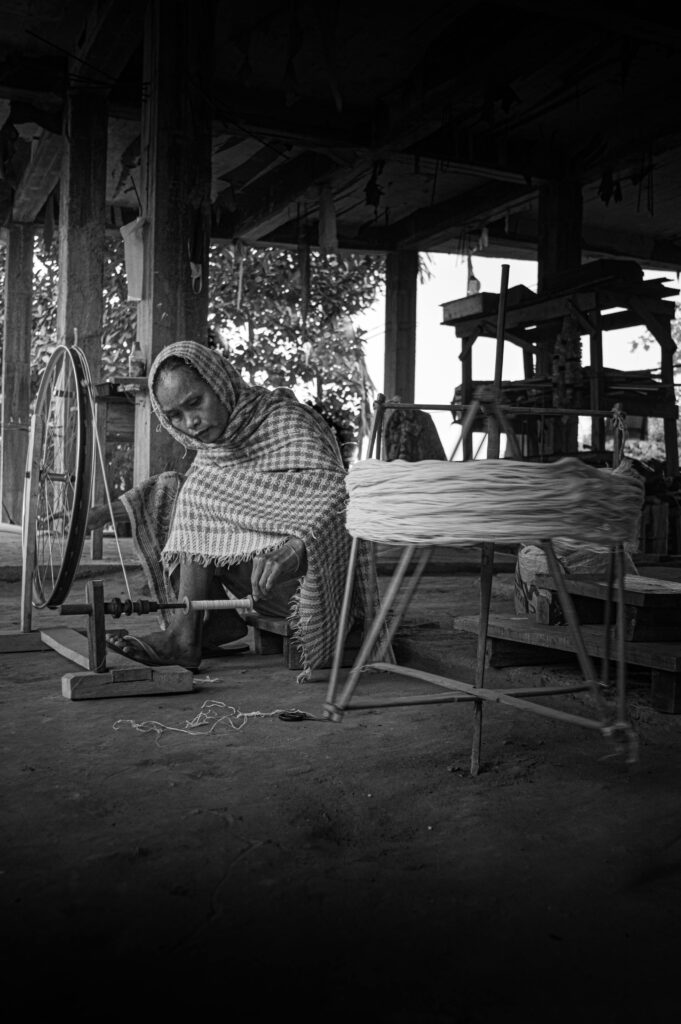
The story of the Indian shawl industry is one of breathtaking artistry, historical significance, and cultural resilience. Once a symbol of regal elegance and global fascination, Indian shawls—particularly those from Kashmir, Punjab, and parts of Himachal Pradesh—experienced a sharp decline by the late 19th century. Yet, like many traditional crafts in India, their journey didn’t end in obscurity. Through a wave of nationalistic pride, grassroots activism, and state-backed efforts, these textiles found a path toward revival, redefining their place in modern India and beyond.
🧶 The Height of Artistry: India’s Luxurious Shawl Tradition
For centuries, Indian shawls, especially the famed Kashmiri pashmina and kani weaves, were treasured across Asia, the Middle East, and Europe. Known for their intricate patterns, warmth, and softness, these textiles were not just accessories—they were heirlooms, status symbols, and artistic masterpieces.
- The Mughal and Sikh courts patronized shawl-making.
- Exports of Indian shawls reached European nobility and aristocracy by the 18th century.
- The shawl industry provided livelihoods to entire communities of spinners, dyers, designers (naqash), and weavers (kani-karigar).
📉 Decline: Colonial Impact and Industrial Competition
By the late 19th and early 20th centuries, several interconnected factors contributed to the sharp decline of the Indian shawl industry:
- European Industrialization:
- Mass production in Britain and France imitated Indian shawls, using jacquard looms to replicate intricate designs at lower costs.
- These imitations flooded European markets, outcompeting original handmade shawls.
- Changing Fashion Trends:
- The once-popular “Kashmiri shawl” fell out of vogue in Europe.
- Victorian dress styles and industrial fashion shifted demand away from traditional draped shawls.
- Colonial Policies:
- British colonial economic policies heavily taxed Indian weavers and promoted imported British goods in Indian markets.
- Craftspeople faced falling incomes, migration, and in many cases, extinction of family trades.
By the 1930s, the once-thriving shawl industry was reduced to scattered remnants.
🇮🇳 Revival Through Swadeshi: The Role of the Freedom Movement
The Swadeshi Movement (early 20th century), part of India’s broader independence struggle, became a turning point.
- Leaders like Mahatma Gandhi advocated for khadi (homespun cloth) and indigenous textiles as symbols of resistance against colonial economic domination.
- Though khadi was the primary focus, the movement rekindled interest in all Indian handcrafts, including shawl weaving.
- The emphasis on self-reliance (swadeshi) inspired a revaluation of traditional skills, reviving respect for artisans who had been marginalized by colonial policies.
This ideological shift laid the foundation for more structured revival efforts in the post-independence period.
🏛️ Post-Independence Revival: Policy, Patronage, and People
After 1947, reviving India’s handicrafts became both a cultural mission and an economic necessity. The government and civil society stepped in to rescue vanishing traditions.
1. Government-Led Initiatives
- The establishment of the Khadi and Village Industries Commission (KVIC) provided a systematic framework for supporting rural craftspeople.
- The government recognized textiles like pashmina, kani, and kulu shawls as heritage crafts deserving protection.
- Financial schemes, training centers, and design institutions were created to improve quality and modernize production.
2. Crafts Council of India and Cooperatives
- Founded in the 1960s, the Crafts Council of India was instrumental in connecting artisans with designers, markets, and export networks.
- Artisan cooperatives were formed to ensure fair wages, eliminate exploitative middlemen, and restore dignity to the profession.
- Branding, quality certification (such as GI tags for Kashmir Pashmina), and exhibition opportunities elevated the visibility of traditional shawls on global platforms.
3. Design Interventions and the Role of NGOs
- Visionaries like Kamaladevi Chattopadhyay championed artisan revival.
- Design schools like NID (National Institute of Design) collaborated with craftspeople to modernize motifs and create contemporary appeal while preserving authenticity.
- NGOs and grassroots organizations organized craft fairs (melas) and revival festivals, sparking urban interest.
🧵 Contemporary Renaissance: Shawls in the 21st Century
Today, the Indian shawl industry is undergoing a renaissance, rooted in both tradition and innovation.
- Luxury fashion houses and ethical fashion brands are embracing handwoven pashmina and woolen shawls.
- Eco-conscious consumers are driving demand for sustainable, handmade textiles.
- Younger generations of artisans, often trained in heritage schools, are reinterpreting designs to suit global tastes.
- E-commerce platforms have empowered weavers from remote regions to connect directly with customers.
While challenges remain—such as climate change, machine-made fakes, and rising material costs—the renewed sense of pride and market support is keeping the art alive.
Contemporary Appeal: Tradition on the Runway
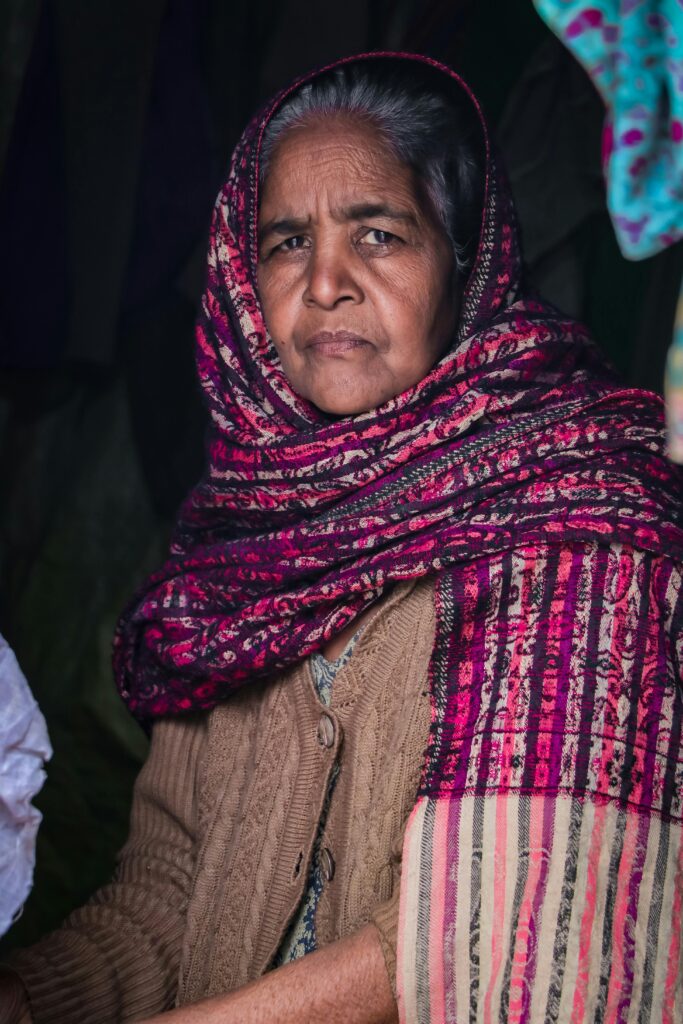
In the ever-shifting world of fashion, where trends emerge and disappear with the changing seasons, one element has proven timeless—tradition. More specifically, Indian shawls, long seen as heritage artifacts, have made a striking entry into the language of global contemporary fashion. From haute couture runways to ethical wardrobes, shawls like pashmina, kani, jamavar, and kullu have been reimagined and reinterpreted—ushering in an era where craft meets couture, and culture walks with confidence.
🧣 From Heritage to High Fashion
For centuries, Indian shawls were considered heirlooms—objects of legacy passed from generation to generation. Today, they’ve transitioned from the dowry chest to the designer ramp.
Indian Designers Leading the Transformation:
- Ritu Kumar, a pioneer in Indian fashion, has long integrated regional textiles into modern silhouettes. Her collections often pair traditional shawls with contemporary tailoring, marrying drapes with structure.
- Sabyasachi Mukherjee, known for reviving opulence through heritage crafts, uses shawls as embroidered panels, borders, or layering elements over Indo-Western bridal wear and couture jackets.
- Rahul Mishra, the flagbearer of sustainable Indian haute couture, works with traditional weavers to create textural, three-dimensional shawl-inspired motifs, showcasing India’s rural artistry on global ramps like Paris Fashion Week.
These designers are not merely preserving tradition; they are redefining its visual vocabulary.
🌍 Indian Shawls on the Global Stage
The appeal of Indian shawls is no longer confined to domestic fashion. International luxury houses and stylists have embraced them for their fine craftsmanship, versatility, and sustainability.
Global Recognition and Collaboration:
- Hermès, the iconic French fashion house, incorporates Indian pashmina into select winter collections, celebrated for its feather-light warmth and tactile elegance.
- Loro Piana, known for their commitment to the finest fibers in the world, sources Himalayan pashmina, promoting it as the gold standard of luxury winterwear.
- Designers in Milan, London, and New York are increasingly integrating Indian shawls into trench coats, avant-garde skirts, and haute scarves—not just for their aesthetics, but for their narrative and depth.
These shawls are no longer mere accessories; they are conversation pieces—linking luxury with lineage.
✨ The Rise of Slow Luxury
As the fashion industry faces growing scrutiny over fast fashion, overproduction, and environmental impact, Indian shawls offer an ethical antidote.
What Makes Shawls “Slow Luxury”?
- Handcrafted process: Every shawl takes weeks or even months to create, often using handlooms, natural dyes, and artisanal skills passed down through generations.
- Sustainable sourcing: Fibers like pashmina come from Changthangi goats in Ladakh, combed gently during molting season. The process supports both animals and local herders.
- Minimal environmental impact: Unlike synthetic, mass-produced textiles, handwoven shawls involve low carbon emissions, zero waste, and no toxic dyes.
In this context, shawls become a symbol of mindful consumption—where buyers value longevity, origin, and story over rapid trend turnover.
👗 Styling Tradition for the Modern Wardrobe
Contemporary fashion is increasingly fluid and experimental. Indian shawls are being styled in ways that move beyond traditional draping:
- As stoles paired with cocktail dresses or minimalist pantsuits.
- Worn as belts, capes, or statement neckpieces.
- Styled as trench coat linings, gown borders, or asymmetric wraps in editorial shoots.
- Upcycled shawls turned into boho bags, jackets, or tunics by young designers and slow-fashion startups.
This shift allows younger audiences to engage with their cultural roots without compromising on individuality or edge.
🧵 Revival Through Representation
Social media, fashion journalism, and influencers have also played a crucial role in popularizing the new face of shawls:
- Instagram campaigns by designers and crafts councils highlight artisans, processes, and weaves.
- Documentary-style storytelling on platforms like YouTube and Netflix showcase the people behind the loom.
- Celebrity endorsements—from Bollywood stars to international icons—are increasing the aspirational value of handcrafted shawls.
Representation is helping reshape perception: a shawl is no longer “ethnic,” it’s elevated.
📈 Challenges and Opportunities
Despite their newfound popularity, the revival of shawls is not without challenges:
- Imitation and machine-made replicas undercut genuine weavers.
- Pricing pressures and lack of consistent demand threaten sustainability for artisans.
- Limited access to global markets for grassroots producers.
However, this also opens opportunities:
- Fair trade models, government GI tagging, and tech-enabled marketplaces can ensure artisans receive recognition and fair compensation.
- Fashion education can embed craft consciousness among young designers.
- Public-private collaborations can scale shawl weaving without diluting its essence.
Challenges Ahead: Protecting the Craft
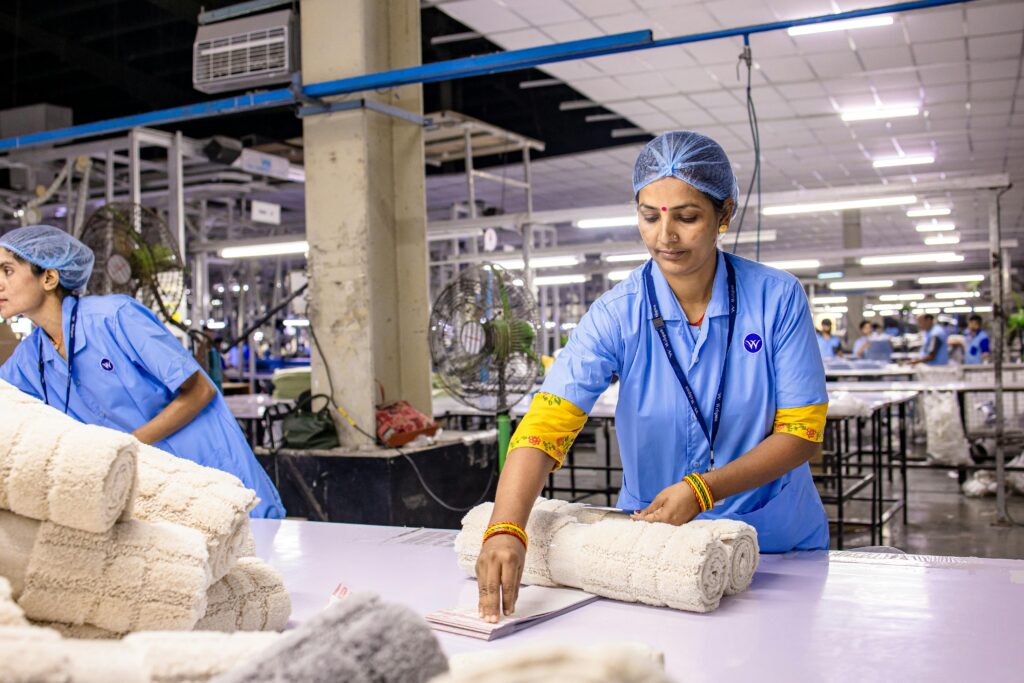
For centuries, Indian shawls have been symbols of artistic mastery, cultural identity, and spiritual elegance. From the handwoven pashminas of Kashmir to the intricate kani, jamavar, and kullu varieties, these shawls embody the soul of India’s textile heritage. Despite their modern resurgence on fashion runways and in conscious luxury circles, the craft behind these treasures now stands at a crucial crossroads.
While demand may be growing, the fragile ecosystem of craftsmanship, tradition, and sustainability that sustains Indian shawls is under serious threat. This article explores the multifaceted challenges threatening the survival of this timeless art—and the urgent need to act.
🧵 1. Counterfeits and the Crisis of Authenticity
One of the gravest threats to the Indian shawl industry today is the proliferation of counterfeit products.
- Blended fabrics such as viscose, acrylic, and synthetic wool are often mass-produced and sold under the label of genuine pashmina or handmade shawls.
- These imitations are cheaper, faster to produce, and more widely available, making it difficult for consumers to discern authenticity.
- As a result, artisans lose both income and credibility, and the market for real handmade shawls shrinks under the weight of deceptive alternatives.
Even well-intentioned buyers are often misled due to lack of education and inadequate labelling standards. The absence of enforced Geographical Indication (GI) protections, especially in global markets, allows copycat producers from other countries to exploit the reputation of Indian weaves.
🏔️ 2. Climate Change and the Himalayan Crisis
At the heart of authentic pashmina shawls is the Changthangi goat, native to the high-altitude plateaus of Ladakh. These goats produce the ultra-fine undercoat used in the world’s most luxurious shawls—but they are also extremely sensitive to environmental changes.
Climate-related challenges include:
- Warmer winters in Ladakh reduce the thickness of the goats’ undercoat, leading to lower pashmina yields.
- Unpredictable weather patterns disrupt traditional grazing routes, making it harder for nomadic communities to sustain their herds.
- Glacial retreat and water scarcity are also threatening the high-altitude ecology required to maintain goat populations and weaving communities.
Without proactive ecological support, the raw material pipeline of genuine pashmina could soon face an irreversible decline.
👥 3. Declining Artisan Numbers and Skill Attrition
The art of shawl weaving is intensely time-consuming and labor-intensive, often requiring months of focused effort for a single piece. As a result, many younger generations are turning away from the craft.
Contributing factors include:
- Low and inconsistent income compared to modern jobs in cities or tech sectors.
- Lack of government support, skill training, or social security for artisans.
- A disconnect between tradition and aspiration, where weaving is seen as outdated or unviable in a digital world.
- Gender and caste-based barriers in artisan communities, limiting who continues to inherit the trade.
If the next generation does not step in, we risk losing centuries of knowledge, technique, and regional variation that cannot be replicated by machines or AI.
🧳 4. Market Access and Middlemen Exploitation
While digital platforms and craft fairs have opened up new markets, many artisans still struggle to:
- Connect directly with buyers (especially international ones).
- Navigate pricing structures, copyrights, and digital branding.
- Escape the grip of middlemen, who often pay weavers a fraction of the retail price.
In the absence of fair trade systems, many artisans remain trapped in cycles of underpayment and invisibility—even as their work sells for thousands overseas.
🛡️ 5. Cultural Dilution and Loss of Narrative
Beyond economics and environment, there’s a cultural erosion at play. As Indian shawls are adapted into Western silhouettes and new-age styling, their original stories, rituals, and regional contexts are often overlooked.
- The spiritual meaning of motifs, such as the paisley (derived from the Persian “boteh”), or the community tales behind kani weaving, are rarely shared with consumers.
- As commercialization rises, the depth of cultural significance risks being reduced to a trend or visual aesthetic.
This isn’t about gatekeeping—but about preserving soul along with style.
The Way Forward: Reviving and Protecting the Legacy
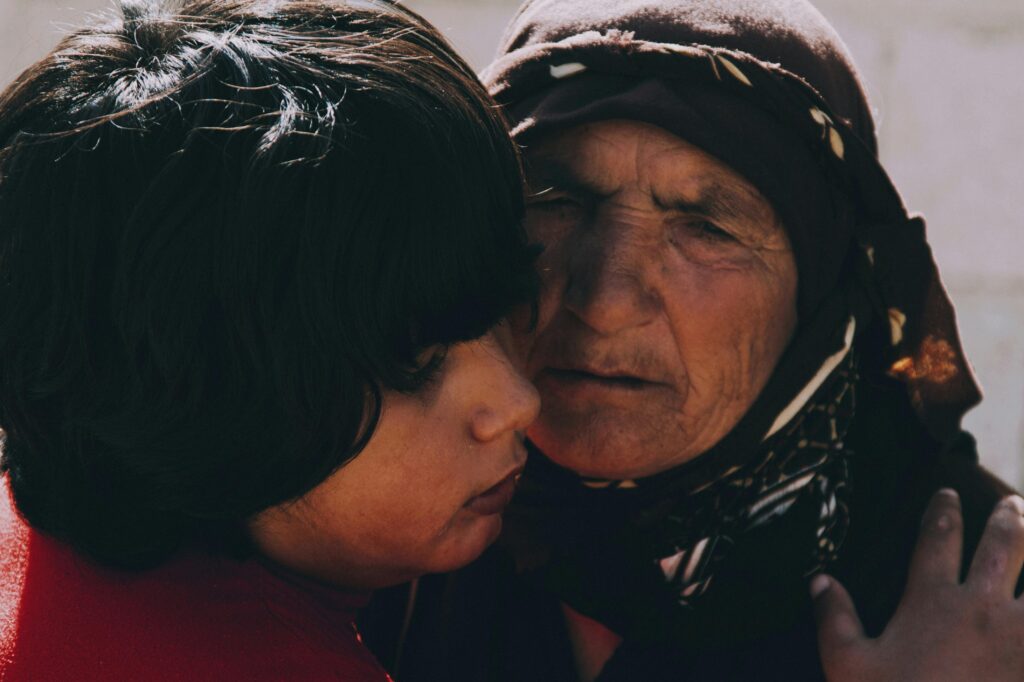
If the world wants to continue enjoying the beauty of Indian shawls, a multi-stakeholder revival strategy is essential.
🔹 Solutions Could Include:
- Stronger Legal Protections
- Enforce Geographical Indication (GI) tags more robustly.
- Introduce international certification and labeling for authentic pashmina and handmade shawls.
- Technological Empowerment
- Use blockchain or QR-code tagging to ensure product traceability.
- Support e-commerce platforms that connect weavers directly to global buyers.
- Eco-Conscious Interventions
- Fund climate-resilient practices in Ladakh and promote ethical goat farming.
- Encourage environmental education among weavers and herders.
- Educational and Financial Support
- Offer skill development programs and stipends to young artisans.
- Provide microcredit and insurance to ensure income stability.
- Storytelling and Cultural Marketing
- Involve designers, curators, and educators in sharing the deep stories behind each weave.
- Make artisans visible as collaborators, not just suppliers.
Conclusion: Wrapping the Past into the Future
The Indian shawl is not just a garment; it is a testament to the resilience of tradition, the evolution of fashion, and the power of craft. From royal robes in Mughal courts to avant-garde interpretations on modern catwalks, it continues to embody a rich legacy—woven one thread at a time.
In a world increasingly defined by speed and disposability, the Indian shawl reminds us of the beauty in patience, precision, and history. As long as there are hands to weave and stories to tell, the legacy of Indian shawls will remain—warm, intricate, and enduring.
